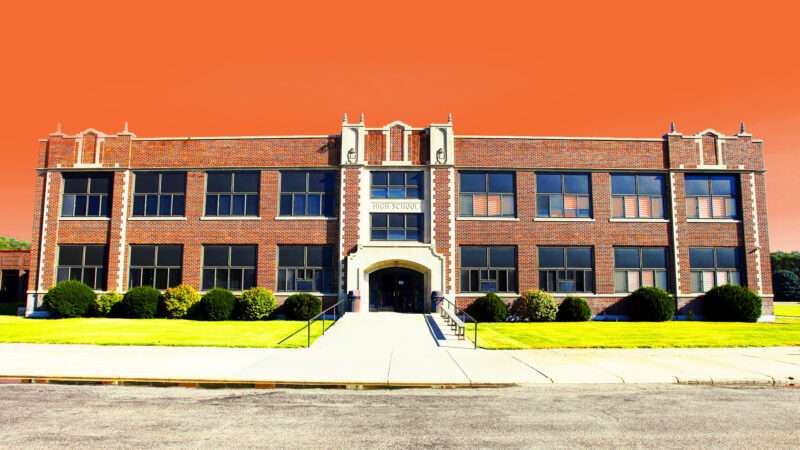
As it turns out, the late teachers’ union president, Al Shanker, probably didn’t utter the revealing quotation often attributed to him: “When schoolchildren start paying union dues, that’s when I’ll start representing the interests of schoolchildren.” Nevertheless, it’s doubtful the likely misquotation will vanish completely because it captures the essence of union-controlled public-school systems.
We know it’s true. Students are not the priority but serve as a prop by which district officials and teachers’ unions arm-twist taxpayers for money. Nothing has illuminated this better than the unions’ foot-dragging response to school closings. They absolutely, positively want schools to reopen—but only after officials agree to a laundry list of demands that have little to do with “the children.”
Now that public schools finally are moving toward a return to classroom learning, teachers’ unions are getting more demanding. As The Sacramento Bee reported, “school employees are seeking extra pay, safety measures, and child care assistance to offset the challenges imposed by the coronavirus pandemic.” The “extra challenges” are the ones faced by school employees, not the schools’ supposed customers.
I’ve been reading teachers’ union statements and it’s hard to see where the disputed Shanker quotation got anything wrong. “As millions of working families…have been forced to leave home for work and scramble to find childcare throughout the pandemic, it’s become more clear than ever that we as a society must do more to provide affordable childcare options for families with children too young for school,” said a United Teachers Los Angeles (UTLA) statement.
Some Los Angeles teachers have started a petition calling for teachers with young children to continue working remotely and for subsidized childcare by the fall, according to a recent Politico report. I re-read the California Teachers’ Association’s lengthy position on reopenings from earlier this year. Peel away the blather and it all comes down to this simple statement: “CTA believes all schools will need additional funding.”
CTA argued that California needs a “thoughtful, long-term view of how dollars are allocated to schools for reopening because this is not a two- or three-month endeavor.” Charter schools and private schools—including the one that Gov. Gavin Newsom’s children attend—have worked tirelessly to get students and teachers back to school, but CTA didn’t see that happening until the state chipped in more dollars for various benefits and safeguards.
These not only include “proper ventilation and testing,” but “additional funding for social and emotional support for students and staff, technical assistance and broadband support for students, and supplemental support for students with special needs and English Language Learners.” The statement said that the reopening plan must be mindful of “equity concerns” and the impact of reopened schools on poor and minority families.
I’d be more sympathetic to these demands if the public schools did an even tolerable job of providing distance learning, but many news stories detailed the plodding and incompetent way that traditional public schools—as opposed to private ones and public charters—transitioned to Zoom-based teaching.
The public funds government monopolies regardless of how well they perform (and generally provides even more money when they fail), so public schools had few incentives to master pandemic challenges. After the shift to distance learning, students had far more failing grades and school districts essentially blamed the students.
At least the public-school establishmentarians should stop prattling about the need to slow down reopenings because of concerns about the poor. “Pandemic-related school closures are deepening educational inequality in the United States by severely impairing the academic progress of children from low-income neighborhoods,” according to a Yale News report on a study from a Yale University economist. Myriad reports have documented the disparate impacts of distance learning on poor kids.
A new poll shows that the governor enjoys high approval ratings for his handling of the school situation, yet he essentially gave the teachers’ union the veto power over reopening plans by requiring that school districts come to an agreement with local collective-bargaining units. That gave districts with powerful unions—typically urban districts with a poor student population—outsized influence, as one Bee columnist explained.
Thanks to that union-friendly decision, California public schools still are a long way from fully reopening. A new Los Angeles Times district-by-district analysis found that only 52 percent of the state’s elementary school students and 37 percent of secondary school students have returned to the classroom. But don’t worry—teachers and other school employees still are being paid and accruing pensions, and soon might get free childcare.
The public school system is a travesty that does not—and cannot—put students first. The only answer is competition, so that parents and students can take their business elsewhere. Yet Newsom signed a package of union-backed legislation that makes it harder for charter schools to start up and expand. Why? When schoolchildren make campaign contributions, you’ll have your answer.
This column was first published in The Orange County Register.
from Latest – Reason.com https://ift.tt/2SzVDkg
via IFTTT